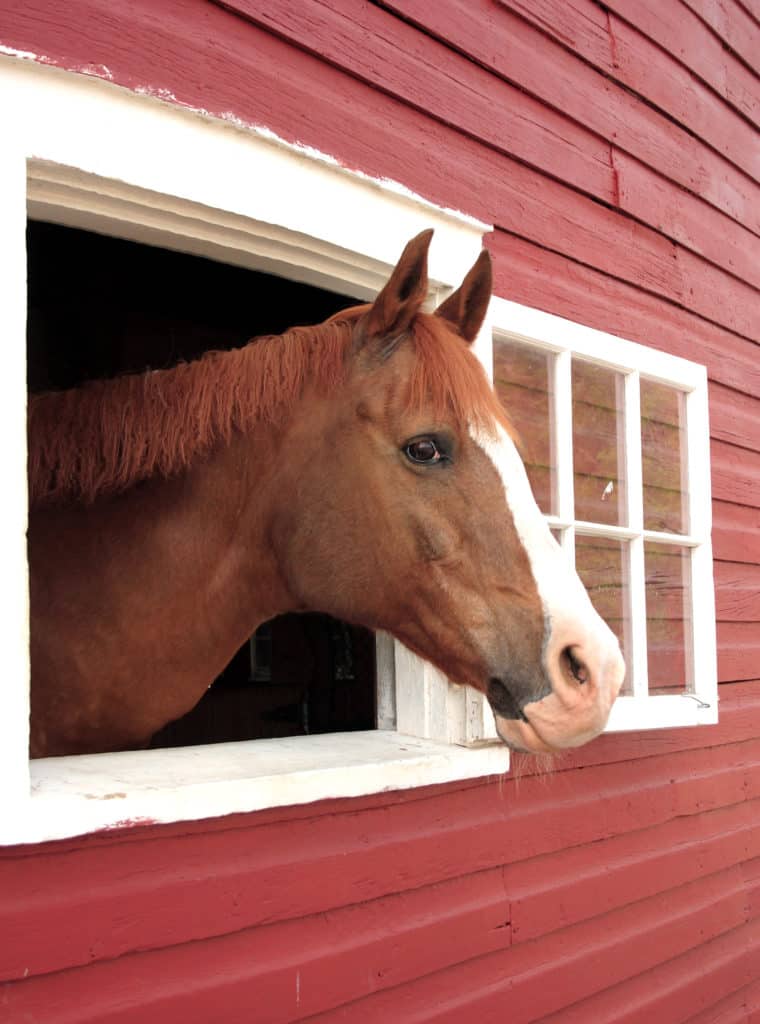UK Equine Initiative Farm and Facilities Expo
Hands-on instruction from UK staff, plus equine and farm equipment displays, at 2011 Farm and Facilities Expo.
Hands-on instruction from UK staff, plus equine and farm equipment displays, at 2011 Farm and Facilities Expo.
More than 540 readers of TheHorse.com responded to a poll asking, “How do you ‘spring clean’ your farm?”

Learn how to clean and disinfect a dirty stall between horses, after a sick horse occupies it, or before placing a mare in the stall to foal (with Dr. Roberta Dwyer of the University of Kentucky’s Gluck Equine Research Center).

No building is completely fireproof, but farm owners and managers can take certain steps to minimize the chances of a fire occurring.

What hidden dangers lurk in your barn? Learn how to maximize air quality and improve safety in the stable.

Find out how a simple investment of making sure your gutters and downspouts are in good working order can help manage mud around your horse barn.
It is important to thoroughly clean and disinfect stalls where mares foal. Disinfectants such as phenolic compounds will kill rotavirus, as well as salmonella, R. equi, and other equine pathogens.
As our understanding of horse health and behavior has improved, barns have changed–a lot. No longer are they just places to house horses. Today’s owners now approach barns and other farm structures with horse/human health, environmental impact…
Researchers have shown that significant amounts of mucus in a racehorse’s airway can negatively affect his performance, and they’ve theorized that dust in the horse’s environment contributes to that mucus. Therefore, the logical nex

People in increasing numbers are seeking limited acreage where they can enjoy the rural way of life, including horses. For some the small farm must at least be operated efficiently in order to be affordable.

Take a closer look at your barn and property and ensure it’s safe for horses and handlers.
Horse transport and housing has an effect on the animals’ stress levels, according to Shannon Garey, a PhD candidate under the direction of Theodore Friend, PhD, PAS, Dipl. ACAABS, of Texas A&M. Garey presented results of an ongoing study on
The new Vetrolin Grooming Guide provides information on techniques for keeping horses clean and healthy. Topics discussed include proper bathing and tail cleaning, cleaning tough stains, managing unruly hair, and protecting the horse?s hair coat
Most farmers can identify with myriad problems associated with mud forming around high-traffic areas, including areas around horse and cattle waterers, feed bunks, round bale feeders, walk paths, and gate entrances. Mud is usually a result of
Horses are better able to maintain fitness when turned out on large pasture, according to Patty Graham-Thiers, PhD, of Virginia Intermont College, Bristol, Va. She presented results of her recent study at the 2009 Equine Science Society
More than 1,250 readers of TheHorse.com responded to a poll asking, “What kind of footing does your riding are
Stay on top of the most recent Horse Health news with
"*" indicates required fields